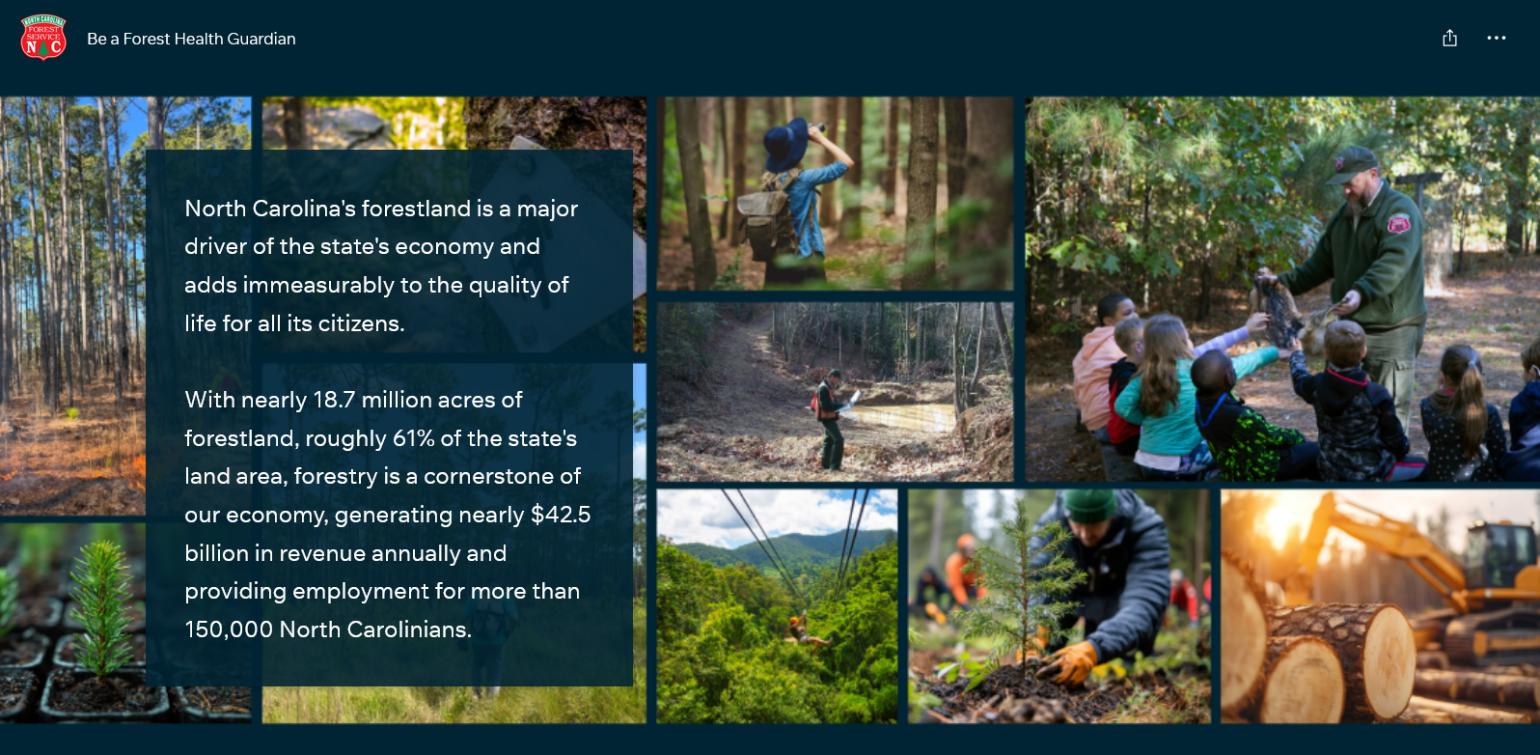N.C. Forest Service - Be a Forest Health Guardian

In the past two decades, several nonnative invasive species have been detected for the first time in the state: laurel wilt in 2011, sudden oak death in 2004, cogongrass in 2012, and wavyleaf basketgrass in 2021 are among just a few. Spongy moth has steadily encroached into North Carolina since the 1900s, pushing the boundaries of the National Spongy Moth Slow the Spread Program quarantine zone.
Today, nonnative invasive threats continue to advance on our borders. A satellite population of Asian longhorned beetle was discovered outside of Charleston, SC, in 2020. While the Asian longhorned beetle remains undetected in North Carolina, early detection is crucial for mitigating the damage it can cause. Given their proximity to the state border, North Carolinians should remain vigilant for signs of this invasive species.
Our forestland needs heroes: will you answer the call?
As worldwide trade and travel expand, so does the opportunity for species to be introduced to new environments. While we can't prevent all introductions, we can work together to safeguard our forests.
As a Forest Health Guardian, you can help the North Carolina Forest Service protect our forests from the threat of invasive species and preserve our natural heritage. By keeping a vigilant eye and trying to limit activities that spread invasive species, you can help protect the forests we love and depend on for generations to come.
